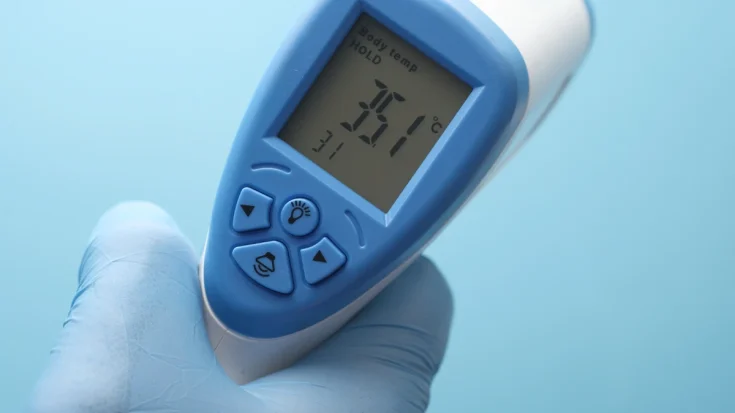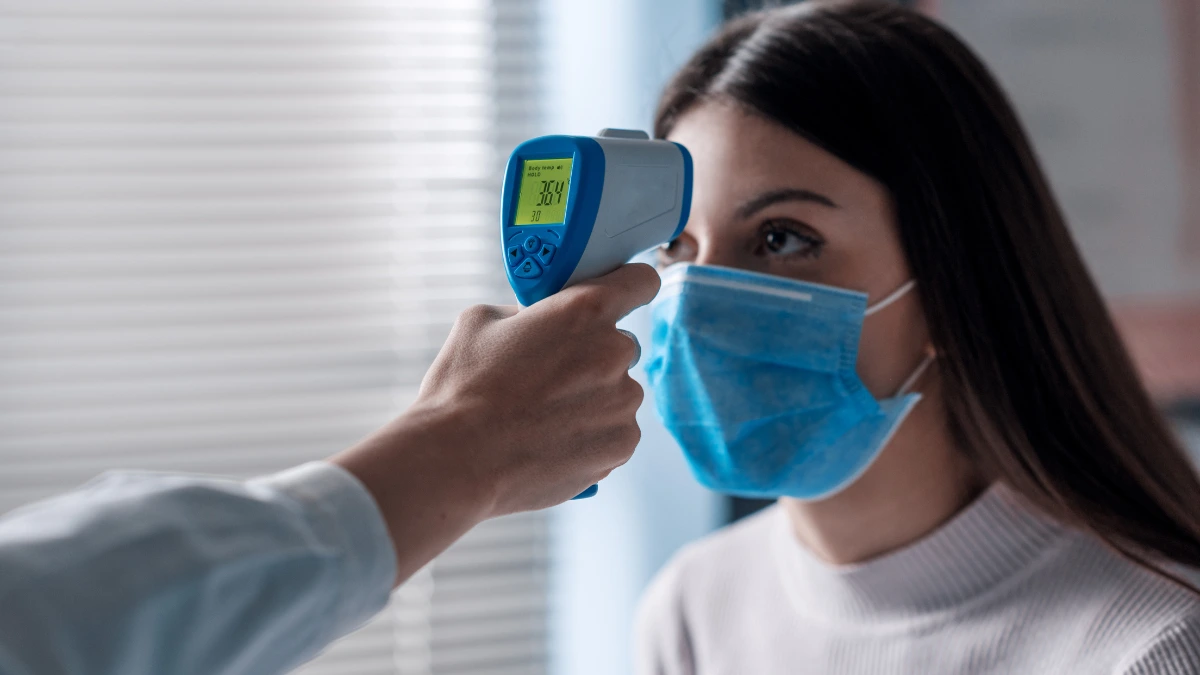The presence of a patient monitor facilitates medical operations by continuously monitoring vital signs, including heart rate, blood pressure, oxygen saturation, and respiratory rate, in real time. One type of patient monitor is a body temperature monitor which has some functions and advantages.
The functions of a body temperature monitor include application in medical environments to non-medical applications. Moreover, the advantages include detecting temperature changes early, monitoring treatment effectiveness, to versatility of use.
This article will provide you with information on body temperature monitors, including their definition, functions, and advantages.
Also Read
Table of Contents
What is a Body Temperature Monitor?

A body temperature monitor is a type of patient monitor specifically designed to monitor body temperature in real-time and continuously. This tool is commonly used in infants, children, patients with infections, high fever patients, and postoperative monitoring. This patient monitors work using sensors that are usually installed in the mouth, throat, or attached to the patient’s skin.
The Functions of Body Temperature Monitor
The body temperature monitor has several functions from application in medical environments to non-medical application. Here are some of its functions:
- Core body temperature monitoring: Allows real-time monitoring of body temperature with high accuracy, thus detecting high-temperature changes.
- Application in medical environments: Able to detect a patient’s fever and monitor the patient’s condition during treatment, to adjust actions accordingly.
- Non-medical applications: Able to monitor temperature in industries for production processes or temperature monitoring on machines and for research purposes to monitor changes in body temperature under various conditions.
The Advantages of Body Temperature Monitor

The body temperature monitor has several advantages from detecting temperature changes early, and monitoring treatment effectiveness, to versatility of use. Here are some of its main advantages in detail:
1. Detect temperature changes early
One of the advantages of a body temperature monitor is that it can detect temperature changes early. This device is able to detect the slightest temperature change, so it helps medical staff see the progress of patients who are being treated and monitored.
2. High data accuracy
This patient monitors have accurate data from infrared emitted to the patient’s body. It aims to assist medical staff in providing the right medical decisions, thus avoiding the risk of errors in diagnosis and treatment.
3. Monitoring treatment effectiveness

Monitoring treatment effectiveness is another advantage of body temperature monitors. By tracking temperature changes, medical staff are able to monitor and evaluate the effectiveness of treatment so as to make necessary adjustments in the continuation of therapy during treatment.
4. Continuous monitoring
With this patient monitor, medical staff can perform continuous monitoring of the patient’s condition. This device can provide valuable data for healthcare providers and research if needed.
5. Versatility of use
Another advantage of body temperature monitors is the versatility of use. While body temperature measurement is often used for medical purposes, the device can also be used for sports or industrial applications.
Those are the definitions, functions, and advantages of a body temperature monitor that you need to know. Another thing to note is that patient monitors on the market must pass the certification test from the Directorate General of Digital Infrastructure (DJID).
Patient monitor regulation is based on the Ministerial Decree (KEPMEN) No. 260 Tahun 2024 and No. 12 Tahun 2025, which requires all radio frequency-based devices, including patient monitors, to meet specific technical standards before being sold in the country.
With DJID certification, users can feel calm about using a patient monitor device whose quality and security are guaranteed. For manufacturers or importers of patient monitor devices, obtaining certification from DJID is a mandatory step before the device can be officially marketed in Indonesia.
To simplify the certification process, Type Approval Certification Services for ICT Products are available to assist with this process as a reliable solution. -UN.


















